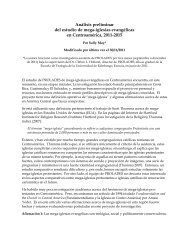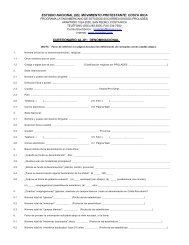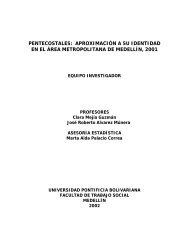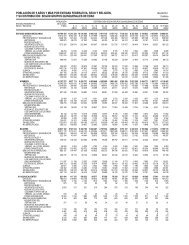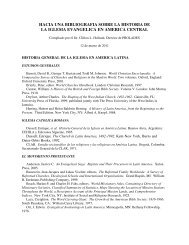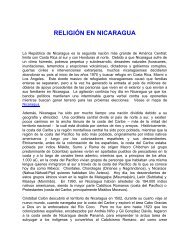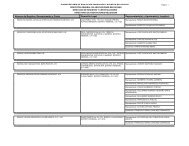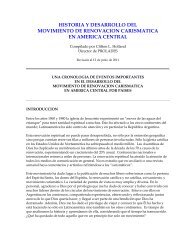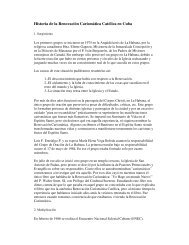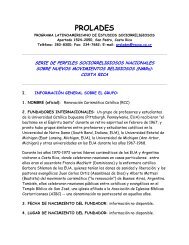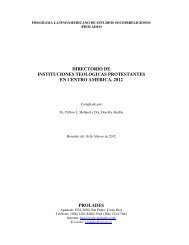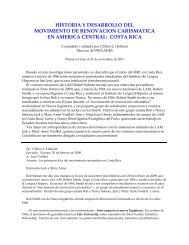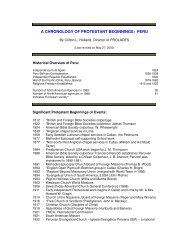belize, 1980 - Prolades.com
belize, 1980 - Prolades.com
belize, 1980 - Prolades.com
You also want an ePaper? Increase the reach of your titles
YUMPU automatically turns print PDFs into web optimized ePapers that Google loves.
6.2 BASIC EDUCATION<br />
The lack of public education in Belize during the early 1880s stimulated the early<br />
missionaries to set up schools for the inhabitants of the Colony. Although the first "free school" was<br />
established by the Public Meeting in 1807, the Anglican Church established its own school in 1814<br />
as a ministry of St. John’s Cathedral; the Baptists and Methodists started their own educational<br />
programs soon after their arrival during the 1820s. Although most of the early schools were located<br />
in Belize City, the Wesleyan Methodists were particularly successful in starting schools on their<br />
mission stations in rural areas, notably in the Stann Creek area among Black Carib. In was not until<br />
after the emancipation of the slaves that the government of the Colony began to assume greater<br />
responsibility for public education. In 1850, legislation was passed to provide for more schools and<br />
to make new regulations for education, including the formation of a Board of Education. But,<br />
primary and secondary education in Belize has been provided for historically along denominational<br />
lines, aided by government grants.<br />
The present educational system is administered by the Ministry of Education through school<br />
managers who may be religious or secular authorities. Managers are responsible for the appointment<br />
and supervision of teachers under their direction, including transfers, suspensions or<br />
dismissals, and for all other matters relating to the establishment, organization and maintenance of<br />
their respective schools. Education at the primary level is free and <strong>com</strong>pulsory for children between<br />
the ages of six and 14 years. In 1976, there were 166 denominational and 11 government primary<br />
schools with 32,200 pupils enrolled. At the secondary level, there were 18 denominational and four<br />
government schools with a total enrollment of 5,210 pupils. The state paid the full salaries of<br />
primary school teachers and met up to 50% of the cost of buildings, maintenance, furniture,<br />
textbooks and equipment of denominational schools, whereas each approved denominational<br />
secondary school received an annual basic grant in addition to other subsidies, depending on the<br />
size of the institution.<br />
In 1978, there were 112 primary and eight secondary schools operated by Protestant<br />
denominations in Belize, with the Anglicans, Methodists, Mennonites and Adventists reporting the<br />
largest number of schools. The other denominational schools were operated by the Roman Catholic<br />
Church, particularly the Jesuits, who regarded education as a basic means of propagating the<br />
Gospel and of <strong>com</strong>municating Catholic social doctrine. As a consequence, most Catholics send<br />
their children to Catholic schools. The most prominent example of Jesuit influence was the role that<br />
the Jesuit-run secondary school, Saint John's College, played in preparing the leaders of the<br />
nationalist movement in the 1940s.<br />
The denominational character of the educational system, however, has led to some<br />
fragmentation of vital resources and to a duplication of efforts among religious groups. During the<br />
early history of Belize, all education was in the hands of the churches. Of course, the churches were<br />
by no means reluctant to assume major responsibility for public education, since they regarded this<br />
as an essential part of their religious duties. However, in rural areas, Protestant and Catholic<br />
schools were often established side by side in small villages where only one school was needed.<br />
More recently, the government has exercised greater control over denominational schools and has<br />
made greater efforts to improve educational standards.<br />
Denominational control of the schools also led to a more serious problem. Whereas the<br />
educational system ought to be a force for unity in the society, the denominational nature and control<br />
of schools has actually accentuated the social and cultural differences between groups. Many of the<br />
denominational schools have been staffed traditionally by foreigners, mainly American Jesuits in<br />
Catholic schools, and British or West Indians in the Protestant schools. Catholic schools have used<br />
American textbooks and have been more ready to embrace Latin American attitudes and to<br />
56



